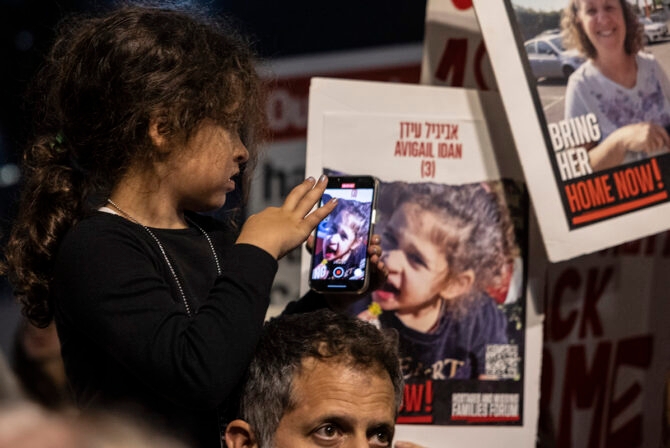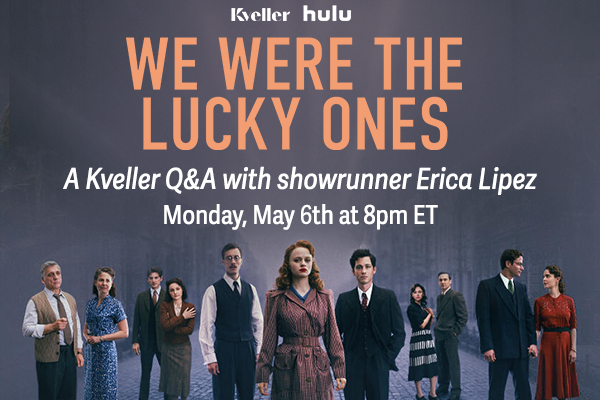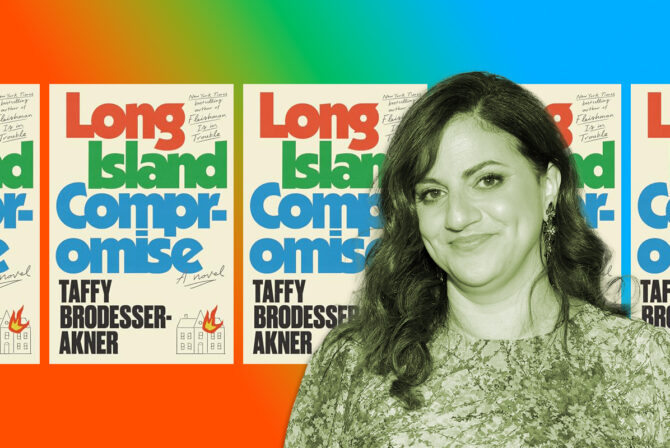Looking back, I am quite sure that my great-Uncle Sid was a sexual predator.
In those days no one seems to have known what that was, and certainly no one talked about it. But even when we were very young, we knew he was not the guy you wanted to be with, especially if you were alone. When I was little, he bent down to kiss me and my sister and would stroke our non-existent breasts. When we got older, my father would hold us away from him, but he was still allowed to kiss us. What were people thinking?!
My dad was a good, involved father and yet it would not have occurred to him to confront the situation. He just protected us from inappropriate touching. And that was considered enough.
Uncle Sid was still alive when I had my older kids. I didn’t let him near them and by then I could protect myself by dodging his kiss. But I still would never have said anything.
When my younger daughter was in seventh grade, she had a male teacher, a “rabbi,” who was very inappropriate in what he would say to the girls. I called the principal, with whom I had a good, long relationship, and voiced my concerns. I was furious when he poo-pooed me. I called the mother of my daughter’s best friend and she, too, had been concerned and called, too. The principal said we were the only two parents to complain. We then had our husbands call, thinking perhaps he would listen to men. Nothing doing. I had already spoken to my daughter about how to handle the situation and marched into school, which I visited frequently as I was very active with the Parents’ Association. I cornered the principal and said that this rabbi guy was a disaster waiting to happen and it was a matter of time until he actually touched someone. Appealing to his “rabbinic authority,” I pointed out that the Talmud specifically said that unmarried men should not teach girls. He agreed that was on the books but poo-pooed me again. I was furious but felt that was as much as I could do.
Now, if that happened, I wouldn’t roll over and play dead. I would have tried to rally the other parents. I would have contacted members of the Board of Directors (among whom I had served). I would have threatened legal action or found out which agency had jurisdiction over the yeshiva. I would have gotten that teacher kicked out. And, by the way, several years later, he was kicked out, but “why” was hushed up.
It’s a dangerous world out there for kids. But at least we now know more about the dangers lurking from child molesters and other bad guys. We talk about it and take action.
When I was raising my kids, the big danger was kidnapping. Kids’ pictures stared out at us on milk cartons during breakfast. I organized a school-wide event in which psychologists came to talk to parents about how to protect their kids and how to talk to kids about how to protect themselves. Police officers came to do the same and fingerprinted the children, giving the prints to the parents for safekeeping “just in case.” Can you imagine? We were terrified.
I was thinking about this after reading about the arrest of a teacher from a local New Jersey yeshiva day school and the futile search for the remains of Etan Patz (the 6-year-old who had disappeared in the 1970s while on his way to school). It came up again as I watched my favorite show, Modern Family, in which Lily, the young daughter of the gay couple, is restrained from running away by a leash. Uh, a “child restraining tether,” as dad Mitchell euphemizes it.
Well, I am totally sympathetic to Cameron, the other dad who insisted on the restraint. I, too, used a (Fisher Price children’s) leash on my youngest when he was about 2-years-old when we went on our Sunday family outings. He was an adorable, outgoing, friendly, fast little kid. Just the kind of kid someone could have grabbed if my attention had been distracted for a second. I remember this lady in the Bronx Zoo glaring disapprovingly at the leash and then at me. I glared back. No one was getting my kid no matter what I had to do!
Thankfully, we made it through his childhood safely. But the newspapers confirmed that not everybody had the same experience. Was it an exaggerated threat? I really don’t know but didn’t care. Whatever we had to do to be vigilant, we did.
Now the bad guys can get your kid in person, by phone, text, or computer. “Strangers” are everywhere, not just on the street or trailing in their car. I used to go down a list of who my kids should consider a “stranger” even if they saw them frequently and greeted them by name. The gardener was, the bus driver was, the handyman, and so on. What about the synagogue rabbi, the kindergarten teacher? Their friend’s father? Then, they were “safe.” Now–I really don’t know who’s safe anymore.
Remaining vigilant these days is almost a full-time job and the types of dangers are so much more varied. It was scary in the “old days,” protecting your children. I really sympathize with young parents today. In general it is such a complicated, complex world to help your kids negotiate. And finding the balance between making them feel safe and yet aware of very real dangers–the balance between feeling secure with an appropriate amount of skepticism and fear–that is not easy.







